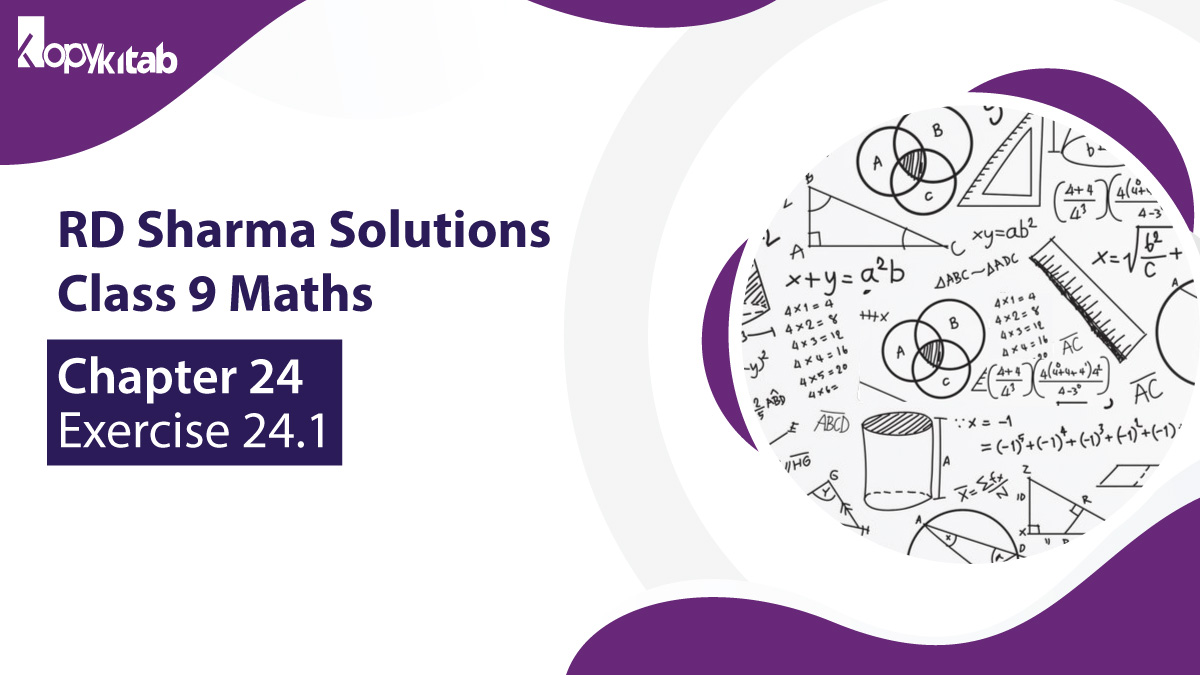RD Sharma Chapter 24 Class 9 Maths Exercise 24.1 Solutions can be significant in providing a better approach to attending questions based on measurement of Central Tendency compared to the others of its kind. However, practicing these questions demand the practitioner to possess greater fundamentals on the topic. Here every question has been addressed and solved through the experts in relatively simple language and provided in a step-by-step fashion for greater understanding. Specifically, the exercise can help the students address the arithmetic value of the data provided. The exercise can be useful from an examination perspective as students can expect very similar questions in the exam.
We have attached the PDF for the students to practice for the exam with various questions based on the RD Sharma Chapter 24 Class 9 Maths Exercise 24.1 Solutions. Practicing helps learners score well in the exam as the PDF is prepared with RD Sharma, CBSE Text Book, and Previous Year’s Question Paper of Class 9 by our subject experts.
Learn about RD Sharma Class 9 Chapter 24 (Measure of Central Tendency)
Download RD Sharma Chapter 24 Class 9 Maths Exercise 24.1 Solutions PDF
Solutions for Class 9 Maths Chapter 24 Measure of Central Tendency Exercise 24.1
What topics are covered as part of RD Sharma Chapter 24 Class 9 Maths Exercise 24.1 Solutions?
RD Sharma Chapter 24 Class 9 Maths Exercise 24.1 Solutions covers the following topics. It covers the topic around the measurement of Central Tendency (here, the introductory part is covered). Additionally, it covers the arithmetic mean of individual observations or ungrouped data, and the topic is called Properties of the arithmetic mean.
Important Definitions RD Sharma Chapter 24 Class 9 Maths Exercise 24.1 Solutions
The topics that come under the RD Sharma Chapter 24 Class 9 Maths Exercise 24.1 Solutions are mentioned below along with the definition.
- Measure of Central Tendency Introduction
- Arithmetic mean of individual observations or ungrouped data
- Properties of arithmetic mean
Measure of Central Tendency Introduction
The measure of central tendency is one value describing a data set upon figuring out the core section as part of the data set. Often the measure of central tendency is referred to as the measures of central location as well.
Arithmetic mean of individual observations or ungrouped data
The arithmetic mean is a kind of measure of central tendency called the total of entire observations divided by the frequency of observations.
Properties of arithmetic mean
The total of deviations of the items through their arithmetic mean has to be valued zero. When it comes to squared deviations of items from Arithmetic Mean (A.M) is least, which has to be less than the total of squared deviations of the items from other distinct values.
Examples of RD Sharma Chapter 24 Class 9 Maths Exercise 24.1 Solutions
Ques- If the heights of five persons are 140 cm, 150 cm, 152 cm, 158 cm, and 161 cm individually. Find the base height.
Solution-
The heights of 5 persons are 140 cm, 150 cm, 152 cm, 158 cm, and 161 cm (Provided)
Base height = (Sum of heights) / (Total no of persons)
Sum of heights = 140 + 150 + 152 + 158 + 161 = 761
Total number of persons = 5
So, Base height = 761/5 =152.2
Ques- The no. of children in 10 families of a location are-
2 , 4 , 3 , 4 , 2 , 3 , 5 , 1 , 1 , 5. Determine the number of children per family.
Solution:
The no. of children in 10 families: 2, 4, 3, 4, 2, 3, 5, 1, 1, 5
= Total no. of children = 2+ 4+ 3+ 4+ 2+ 3+ 5+ 1+ 1+ 5 = 30
= Total Families = 10
= No. of children per family = Base = (Total no of children)/ (Total Families) = 30/10= 3
= Hence, no. of children per family is 3.
Ques- The percentage of marks scored by students of a class in maths is-
64 , 36 , 47 , 23 , 0 , 19 , 81 , 93 , 72 , 35 , 3 , 1. Find their average.
Solution:
The percentage marks scored by students: 64 , 36 , 47 , 23 , 0 , 19 , 81 , 93 , 72 , 35 , 3 , 1
= Sum of marks = 64+ 36+ 47+ 23+ 0+ 19+ 81+ 93+ 72+ 35+ 3+ 1 = 474
= Total students = 12
= Now, Average marks = (Sum of marks )/ (Total students )
= 474/12
= 39.5
= Average Marks = 39.5
